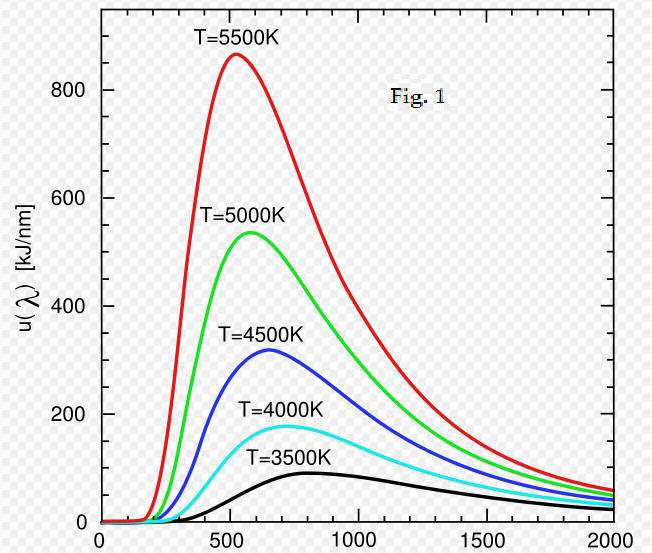The Radiometer Operation Principle
This paper was written for the executives and sales representatives who had to explain the BIS_WDS, a microwave passive concealed object detector, to security experts and other potential buyers.
The purpose of the BIS_WDS is the detection of objects that subjects under surveillance could be concealing beneath their clothes. The principle for this detection relies on the fact that these hidden objects are always cooler than the skin in 4 o more degrees Celsius. All surfaces with temperatures above 0 Kº radiate in all frequencies, since the spectrum of this radiation depends on its absolute temperature, measuring this radiation in a convenient band can differentiate a hidden object from the skin in the background.
 Radiation
spectra for different temperatures can be seen in Fig. 1. The wave length
at which the radiation peaks grows as temperature decreases. When it gets
down to body temperature, this peak goes into the infrared with a wavelength
of 9500 nm (~10 mm), a region to be
found way beyond the right limit of the Fig 1. This is the zone where
thermal imaging cameras operate; producing the all too familiar pseudo color
images that Hollywood loves to show off in their action movies. The problem
with using infrared for detecting concealed objects is that clothing may not
be transparent enough to the infrared. However, cloth is perfectly
transparent to microwave and, at body temperature, there’s also some
microwave radiation, but only with one thousand times less power.
Radiation
spectra for different temperatures can be seen in Fig. 1. The wave length
at which the radiation peaks grows as temperature decreases. When it gets
down to body temperature, this peak goes into the infrared with a wavelength
of 9500 nm (~10 mm), a region to be
found way beyond the right limit of the Fig 1. This is the zone where
thermal imaging cameras operate; producing the all too familiar pseudo color
images that Hollywood loves to show off in their action movies. The problem
with using infrared for detecting concealed objects is that clothing may not
be transparent enough to the infrared. However, cloth is perfectly
transparent to microwave and, at body temperature, there’s also some
microwave radiation, but only with one thousand times less power.
The chances for detecting a particular radiation depend, not only its power, but also on the background noise level. Microwaves over 200 GHz are polluted with CMB or Cosmic Microwave Background (famous for generating the Big-Bang theory about the origin of the Universe). Below 10 GHz it gets polluted again, this time with atmospheric and galactic backgrounds and last, but not least, the ever growing human communication interferences. Between these two limits the microwave bands are very clean making bodily radiation in this band detectable.
There are few choices for clean Microwave bands,